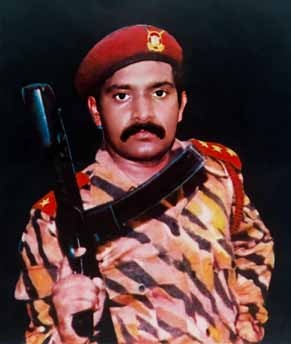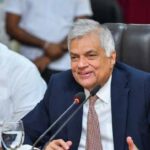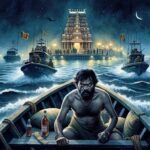In 1981, in Madurai, Tamil Nadu, the first uniform of the Liberation Tigers was designed by Nataraj Master. Nataraj Master also created the emblem of the Liberation Tigers. During this period, the Tigers lacked the resources to design and sew a unique uniform. LTTE supremo Prabhakaran devised an idea. He directed Nataraj Master to modify a Tamil Nadu police khaki uniform purchased from a shop in Madurai by painting stripes with a small brush using oil paint. Prabhakaran aimed for the uniform to mimic the stripes of a tiger’s skin; thus, the first uniform of the Tigers was created.
Wearing this uniform, Prabhakaran took a photograph while holding an SMG gun, which had been snatched from Police Officer Bastiampillai after killing him at Maduppannai on April 7, 1978. This was the first photo of Prabhakaran taken in uniform. Lieutenant Seelan, also known as Charles Anthony, was also photographed wearing the same uniform. These photos were taken by Nataraj Master at his home.


a friend in London who visited him in Chennai during the
1983-84 period.

Due to the urban setting of their operations, Kiddu did not prioritize uniforms, resulting in the fighters
wearing shorts provided by the LTTE

Nittikaikkulam, Mullaitivu, in the late 1980s. Pictured wearing an Indian army uniform, uniquely modified with black cloth added to the calf and forearm sections
After the ethnic riots in July 1983, the Indian government began assisting Tamil militant organizations. Consequently, the Tigers started using Tamil Nadu as a base for their operations. During this time, they donned uniforms similar to those of the Indian Army, which were purchased in Chennai. These uniforms were also worn during the conflict with the Indian Army in 1987. This led to some unique incidents, as both the Tigers and the Indian Army, clad in identical uniforms, clashed. In close combat, it became difficult to distinguish friend from foe, creating confusion. To mitigate this, Prabhakaran implemented a change. He instructed that black cloth be added to the calf and forearm sections of the uniforms worn by the Tigers, aiding in identifying their fighters during battles.
In 1989, negotiations started between the Tigers and the Premadasa government. After this, there was a decrease in Indian Army operations, and an unofficial ceasefire was observed from October 1989. During this period, Prabhakaran fully realized his uniform project. In the Erode region of Tamil Nadu, a stronghold of Tiger supporters, fabric for the uniforms was procured. These fabrics were then transported by boat to Sri Lanka and delivered to a camp in the Niththikaikulam forest, where uniforms for the Tigers were produced. Numerous tailors from Jaffna and Chavakachcheri were coerced into making these uniforms in the forest. A Tiger member named Ajith, who now resides in England, was responsible for this stitching unit.

Following the withdrawal of the Indian Army from the northern and eastern parts of Sri Lanka in 1990, the Tigers’ commander in the Batticaloa and Ampara districts, Karuna Amman, commissioned local weavers in Batticaloa to produce the uniforms. Later, uniforms made abroad by the Tigers’ international representative, Kumaran Pathmanathan, also known as KP, were utilized by the Tigers few a times only.
In 1996, after relocating to the Vanni region, the Tigers adopted distinct uniforms for each of their divisions – land, naval, air, and black tiger forces – each distinguishable only by color. Separate uniforms were also used by the Tigers’ police and border forces. In 1983, the LTTE’s first book, titled ‘State Terrorism and Armed Revolution,’ featured Prabhakaran’s first photo in uniform. In this photo, he is seen wearing the Tigers’ initial uniform. Prabhakaran’s final photograph, taken when he lay dead in Nandikadal on May 18, 2009, also shows him wearing the Tigers’ uniform.



